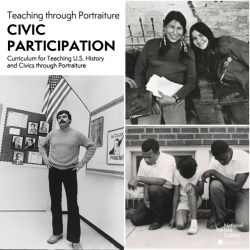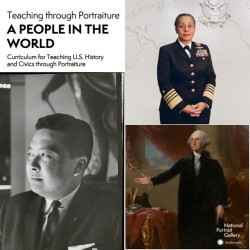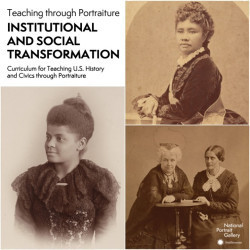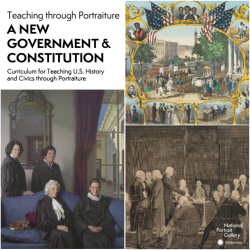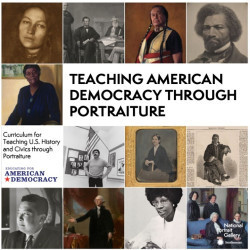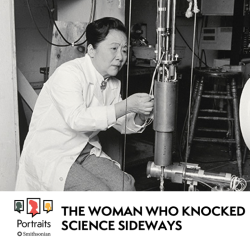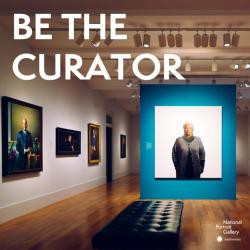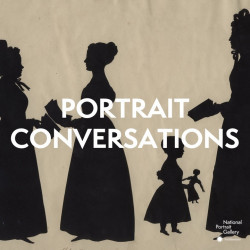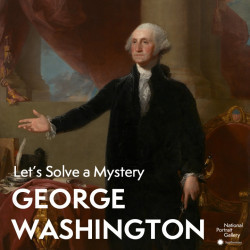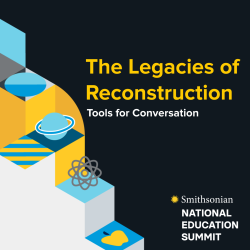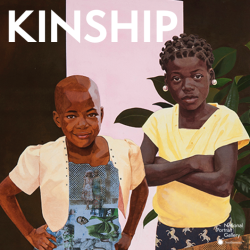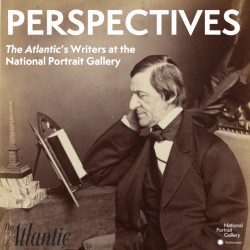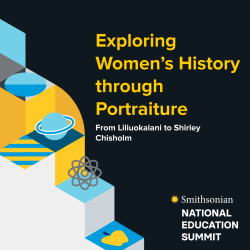Nicole Vance Nash's collections
Teaching American Democracy through Portraiture: Civic Participation
<p>In this Learning Lab collection, portrait photography of twentieth-century activists<em> </em>is used as an entry point to teach about the civic participation. Using <a href="https://www.educatingforamericandemocracy.org/">Educating for American Democracy</a>'s roadmap as a guide, this lesson centers on the theme <a href="https://www.educatingforamericandemocracy.org/the-roadmap/7themes/">Civic Participation</a>. . Students will examine not only the portrait subjects--including Ona Kingbird, John Lewis, and Sal Castro--but will also gain insight into the larger historical time period in which the subjects lived and how they located agency, made change, and sustained ideals of American democracy.</p>
<p>This collection contains three lessons that highlight activists: "Reading Portraiture: See – Think – Me - We," "Engaging History: Student Nonviolent Coordinating Committee," and "Connections to the Present: Students in Action" with the last lesson containing an artmaking prompt for Educating for American Democracy's Design Challenge: <a href="https://www.educatingforamericandemocracy.org/the-roadmap/5designchallenges/">Motivating Agency, Sustaining the Republic</a></p>
<p>Review <a href="https://learninglab.si.edu/collections/reading-portraiture-101/6VeUfzDnKE87HIOP">Reading Portraiture 101 </a>before beginning the lessons.</p>
<p>#NPGteach #EducatingForDemocracy</p>
<p></p>
 Nicole Vance Nash
Nicole Vance Nash
53
Teaching American Democracy through Portraiture: A People in the World
<p>In this Learning Lab collection, portrait of individuals in the executive branch and armed forces are used as entry points to teach about the United States in a global context. Through close looking students will investigate key historical events in international affars and build and understanding of the principles, values, and laws at stake in debates about America’s role in the world.</p>
<p>This collection contains three lessons: "Reading Portraiture: Exploring Civic Points of View with Art," "Engaging History: Debates on the Treaty of Versailles," and "Connections to the Present: Faces of the Armed Forces."<br></p>
<p>Review Reading Portraiture 101 before beginning the lessons.</p>
<p>#NPGteach #EducatingForDemocracy</p>
 Nicole Vance Nash
Nicole Vance Nash
47
Teaching American Democracy through Portraiture: Institutional and Social Transformation
<p>In this Learning Lab collection, portrait photography of nineteenth century women including Susan B. Anthony, Elizabeth Cady Stanton, Queen Lili'uokalani, and Ida B. Wells are used as entry points to teach about institutional and social transformation. Throughout this collection, students will examine not only the portrait subjects but will also gain insight into the larger historical time period in which the subjects lived and how they navigated and made change in their communities and the United States.<br></p>
<p>This collection contains three lessons that highlight activists: "Reading Portraiture: Women’s Suffrage in 3D," "Primary Perspectives on Hawaii," and "Connections to the Present: Changemaker Conversations."</p>
<p>Review Reading Portraiture 101 before beginning the lessons.</p>
<p>#NPGteach #EducatingForDemocracy</p>
 Nicole Vance Nash
Nicole Vance Nash
46
PORTRAITS Podcast: The Woman Who Knocked Science Sideways
<p>In this lesson, students will use close-looking to learn more about Experimental Physicist, Dr. Chien-Shiung Wu and discuss the contributions of women to science, technology, engineering, art and mathematics (STEAM) fields. </p>
<p>This lesson plan was written by NPG Gallery Educator, Erin Koester-Tussell.</p>
 Nicole Vance Nash
Nicole Vance Nash
24
PORTRAITS Podcast: Loving
<p>In this lesson, students will learn about historical taboos around relationships and race in the United States using a portrait of Richard and Mildred Loving. They will analyze contemporary societal norms around relationship diversity along ethnic, religious, and/or class lines.</p>
<p>This lesson plan was written by NPG Teen Programs Specialist, Sahtiya H. Hammell.</p>
 Nicole Vance Nash
Nicole Vance Nash
19
PORTRAITS Podcast: Live Long and Protest
<p>In this collection, students will analyze the importance of representation, reflect on the role of discrimination in the mid-20th century and reflect on the role of protest in American citizenship. </p>
<p>This lesson plan was written by NPG Teen Programs Specialist, Sahtiya H. Hammell.</p>
 Nicole Vance Nash
Nicole Vance Nash
25
The Art of Portraiture
<p>This Learning Lab Collection complements the National Portrait Gallery student program, The Art of Portraiture.</p>
<p>Students will take a close look at modern and contemporary portraiture through the lens of artists’ decisions, paying particular attention to the different approaches that artists take to their subject matter and the different processes that they use in making their art.<br></p>
<p>#NPGteach<br></p>
<p>Objectives:</p>
<ul><li>Examine modern and contemporary portraiture and identify, compare, and contrast visual elements in the portrait.</li><li>Identify and analyze the contributions of modern and contemporary Americans to U.S. history and society.</li><li>Discuss the specific choices an artist has made in his or her portraits.</li><li>Discuss the relevancy of portraiture as a contemporary art form.</li></ul><p>Learn more about our <a href="https://npg.si.edu/teachers/school-groups">virtual 2020-2021 student programs</a> and explore more of the <a href="https://learninglab.si.edu/org/npg">National Portrait Gallery's Learning Lab collections</a>.</p>
<p>Keywords: Portraiture, Painting, Sculpture, Photography, Mixed Media, Video Art, Engraving, Printmaking, Artist, Contemporary, Artistic Style, Symbols, Biography, Self-Portrait</p>
<p></p>
 Nicole Vance Nash
Nicole Vance Nash
48
Portrait Conversations
<p>This Learning Lab Collection complements the National Portrait Gallery student program Portrait Conversations.</p>
<p></p>
<p>Through this discussion based program students will compare and contrast visual elements in portraits across different historical eras, paying particular attention to differences in style and media and to the variety of historical contributions represented. Students will read portraiture by identifying and analyzing the elements of portrayal to learn about the biography of the sitter.</p>
<p></p>
<p>#NPGteach</p>
 Nicole Vance Nash
Nicole Vance Nash
54
Let's Solve a Mystery: George Washington
<p>Follow the clues to uncover the mysteries of the Lansdowne portrait at the Smithsonian's National Portrait Gallery. Each correct answer will help you learn something about George Washington and the portrait!</p>
<p>#NPGteach</p>
 Nicole Vance Nash
Nicole Vance Nash
11
Teaching Difficult Histories with Primary Sources and Portraiture
<p>How do we teach a balanced, comprehensive, and complex history of the United States? In this collection, explore themes of civil rights, American imperialism, Native histories, the ethics of medicine, and more. Through document analysis and reading portraiture strategies, uncover previously unknown stories and consider the pressures and motivations that shaped historical controversies. <br></p>
<p>This Learning Lab collection has been created in conjunction with the Teaching Difficult Histories Through Portraiture and Primary Sources professional development workshop, co-hosted by the National Portrait Gallery and the National Archives and Records Administration, in August 2023.<strong></strong><strong></strong></p>
<p>#NPGteach</p>
 Nicole Vance Nash
Nicole Vance Nash
83
Traces of a Life in Bondage: Flora’s Silhouette
<p>This collection focuses on a life-size, hand-cut silhouette representing Flora (1777–1815), a woman who was enslaved in Connecticut, and the bill of sale that transferred her ownership on December 13, 1796, when she was nineteen years old. Her life story invites us to consider the period from the American Revolution to the close of the War of 1812 from a rarely considered perspective—that of an enslaved woman. Flora is emblematic of vast numbers of enslaved women whose likenesses and histories have gone unrecorded.</p>
<p>Her silhouette was traced at life-size directly from her cast shadow, lending a tangible sense of human presence to her portrait. But who made it? And for what purpose? We will explore these questions through consideration of the few facts known about Flora's life; the regional differences that distinguished the experiences of enslaved women in the North and in the South; the social conventions of silhouette-making; and the history of representing African American women in late eighteenth and nineteenth-century American portraiture.</p>
<p>This project received support from the Smithsonian American Women's History Initiative.</p>
<p>#NPGteach</p>
 Nicole Vance Nash
Nicole Vance Nash
57
Kinship
<p>Explore portraits from "Kinship" at the Smithsonian's National Portrait Gallery in this Learning Lab collection.</p>
<p>"Kinship" features the work of eight contemporary artists who illuminate the complexities of our closest interpersonal relationships through portraiture. Njideka Akunyili Crosby, Ruth Leonela Buentello, Jess T. Dugan, LaToya Ruby Frazier, Jessica Todd Harper, Thomas Holton, Sedrick Huckaby, and Anna Tsouhlarakis poignantly visualize the nuances of this theme within and outside of family units. Through painting, photography, sculpture, and performance, the artists reveal how kinship, by its very nature, embraces contradictions. They also highlight the crucial role that storytelling and memories have in connecting different generations, encompassing both the living and the dead.</p>
<p>When we started working on this project in 2018, there was no way we could have predicted that its core concepts were about to be tested on a global scale. The separation and overwhelming loss resulting from the COVID-19 pandemic, the renewed calls for social and environmental justice, and recent armed conflicts have deepened the resonance of the exhibition’s themes. Vulnerability, intimacy, privacy, community, familiarity, and recognition have all been questioned and realigned, underscoring how portraiture provides a shared space for empathy and understanding.</p>
<p>Kinship <em>is the latest in the museum’s </em>Portraiture Now<em> series, which was established in 2006 to highlight contemporary artists whose work focuses on portraiture or figurative art.</em></p>
<p><em>...<br></em></p>
<p><em>Parentescos presenta a ocho artistas contemporáneos que abordan a través del retrato las complejidades de nuestras relaciones interpersonales más estrechas. Njideka Akunyili Crosby, Ruth Leonela Buentello, Jess T. Dugan, LaToya Ruby Frazier, Jessica Todd Harper, Thomas Holton, Sedrick Huckaby y Anna Tsouhlarakis visualizan con emotividad los matices de este tema dentro y fuera de las unidades familiares. En pintura, fotografía, escultura o performance, los artistas revelan que el sentido de parentesco —sea por afecto, afinidad o sangre— acoge contradicciones por su propia naturaleza. Asimismo destacan el rol crucial de los relatos y recuerdos en cuanto conectan a las generaciones, a los vivos y los muertos.<br><br>Al iniciar este proyecto en 2018, no anticipamos que sus conceptos medulares pronto serían puestos a prueba a escala global. La separación y la abrumadora pérdida causadas por la pandemia de COVID-19, el renovado reclamo de justicia social y ambiental y los recientes conflictos armados han exaltado la resonancia de los temas de esta exposición. Las nociones de vulnerabilidad, intimidad, privacidad, comunidad, familiaridad y reconocimiento han sido todas cuestionadas y reajustadas, poniendo de relieve el retrato como espacio compartido de empatía y comprensión.<br></em></p>
<p><em><br></em></p>
 Nicole Vance Nash
Nicole Vance Nash
51

